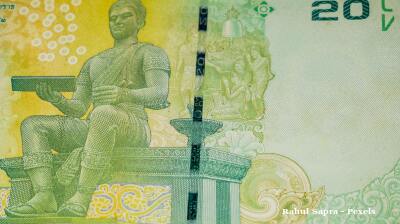Russia’s manufacturing sector deteriorated further in September, marking the fourth consecutive month of contraction, as both domestic and foreign demand weakened, S&P Global reported on September 30. (chart)
The seasonally adjusted Russia Manufacturing Purchasing Managers’ Index (PMI) fell to 48.2 in September from 48.7 in August, indicating a sharper downturn in operating conditions. The decline in new orders accelerated, with firms citing financial strain and customer hesitancy as key factors. Export sales saw their fastest drop since November 2022, reflecting subdued conditions in key international markets.
“September data indicated a quicker decrease in new orders at manufacturers, as weak demand conditions hampered new sales,” S&P Global said. “The modest decline in total new orders was also underpinned by a sharp drop in new export sales.”
As a result of the falling demand, production was reduced for a fourth straight month. The rate of output decline was the second-fastest in over three years, surpassed only by the contraction recorded in July 2025. Employment also shrank modestly, driven by voluntary resignations and non-replacement of departing staff.
“Reduced production requirements led to a renewed decrease in employment at the end of the third quarter,” the report said, noting that the contraction in staffing levels was the steepest in three months.
While backlogs of work continued to fall, the pace of decline was the slowest in eight months, suggesting a more gradual reduction in pressure on capacity. Input buying also decreased, though companies increasingly relied on existing inventories to meet order fulfilment. Meanwhile, stockpiles of finished goods rose at the quickest pace since April 2023, a trend attributed to shipment delays and customer payment issues.
Despite falling input purchases, cost pressures persisted. Input price inflation accelerated to a four-month high, driven by longer supplier delivery times and unfavourable currency movements. However, both input cost and output charge inflation remained below historical averages.
“Firms endeavoured to pass-through higher costs to customers via a fresh increase in selling prices in September. The pace of charge inflation was only fractional, however,” S&P Global noted.
Vendor performance weakened to its lowest level in six months, with logistical disruptions and material shortages contributing to longer lead times.
Amid the downturn, manufacturers expressed growing optimism for the year ahead. Confidence reached a four-month high, supported by expectations of new product launches, increased tender activity, and potential demand recovery.
“Russian manufacturers registered stronger confidence in the outlook for output over the coming 12 months,” S&P Global stated.
Data

Moldova’s economy turns to growth in Q2, helped by investments
Upturn follows three-quarter recession prompted by last year's poor harvest.

Polish inflation rate remains steady at 2.9% y/y in September, flash estimate shows
September's flash reading is below the market consensus, which expected an expansion of 3% y/y, as fuel price rises were offset by more favourable food prices.

COMMENT: Thailand’s baht appreciation a symptom of underlying malaise
Economic fundamentals in Thailand hardly justify a stronger currency. Growth has been tepid, inflation low, and interest rates insufficiently active to pull in speculative capital both at home and from overseas.

Kosovo Business Alliance warns diaspora investments locked in non-productive real estate
Business representatives say €9bn real estate investments are “dead capital” that generate neither jobs nor economic growth.




